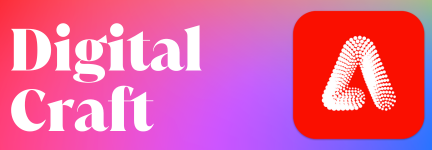
How adam&eveDDB and Three Massive Brands Combined Forces to Link Sports and Gaming Forever

The coalition of brands behind adidas GMR is a real dream team. Not only did the sportswear brand collaborate with London creative agency adam&eveDDB to develop the groundbreaking new wearable tech, it also partnered with EA Sports FIFA Mobile - a football game with 300 million players worldwide - and Google - whose Jacquard technology powered the aspect of the project that exists in the real world of football.
GMR is a smart insole that tracks your real world football skills and uses that data to improve your team in EA Sports FIFA Mobile – the better you get on the football field, the better your players become in FIFA Mobile.
To launch the creation, adidas secretly hid the GMR insole inside football boots in the days running up to the tech’s official release on March 10th. An online film, promoted by some of football’s biggest names, documents the high tech insoles being ‘smuggled’ into boots, before being hidden in stores around the world for gamers and footballers to find and sent to unknowing influencers.
To try and get our heads around all the cleverness operating between the various teams involved in creating adidas GMR, Alex Reeves caught up with the relevant teams at adidas, EA Sports and Google, as well as adam&eveDDB joint CEO Mat Goff.
LBB> What was the original starting point for adidas GMR? Was it adidas, EA Sports, Google or an idea from somewhere else?
adidas> The concept for GMR came from research carried out by adidas which identified a simple consumer insight: there is a large overlap in those that love to play football in the real world, and those that love to play FIFA and FIFA Mobile. Teaming up with EA Sports was therefore a natural and exciting next step. Google’s Jacquard technology made the ambition possible – a true partnership between all three brands.
LBB> What were the key motivations for the project for both adidas and EA Sports?
adidas> At adidas we have the belief that through sports we have the power to change lives. In a world that is constantly evolving, digital being at the forefront of that change, we wanted to create a new experience for players by connecting physical football and digital gaming. Our main motivation for this project was to make the game of football even more fun and rewarding for consumers.
LBB> adidas, EA Sports and Google all played a big part in GMR coming together. What was adam&eveDDB's role as, to be fair, a much smaller company than any of those giants, in bringing these parties and technologies together and making the project happen?
Mat> We came on board to develop the launch campaign mid product development. It meant that as well as the campaign we were able to become true partners with adidas, EA Sports and Google in developing the comms alongside product functionality, having a collective impact on overall GMR user experience.
We developed real world comms as well as in-game, from the global launch through to local activations. More specifically we helped to define in-game challenges, GMR app UX, packaging visuals, branding and of course campaign comms.
LBB> What was the technology story? What did you know from the start that you had to work with? And what did you have to test to find out what was possible?
Google> From the start we knew we had to find a lightweight solution for complex movement interpretation that could fit onto our Jacquard Tag and be engaged with naturally. We set to work training our machine learning algorithms to interpret football specific movements and with the help of adidas were able to test in real-world situations. The result was a set of advanced algorithms that can interpret what you’re doing on the pitch without requiring you to change the way you play.
LBB> In terms of the broader wearables landscape, what are the most groundbreaking parts of GMR?
Google> Two aspects of GMR are notable as big steps forward in the wearables landscape:
GMR goes beyond typical fitness tracking by using machine learning to interpret the complex human motions associated with a sports activity such as football. This allows customers to integrate their kicks, shot power, and even the ball speed from their kicks, into the game. This capability really opens up a whole new way to merge the physical and virtual worlds of sports and gaming.
The complex machine learning models required for GMR would typically run on large Cloud servers, or possibly on a mobile phone. However, neither of these solutions is ideal for players out on a pitch. So we put a lot of focus into paring the models down to run on the tiny Jacquard Tag, which is small enough to fit in your shoe without being noticable. The end result is that players just go out and play the way they always do, while the tech is subtly hidden and doing its job.
LBB> How did you decide on which real footballing actions would be tracked?
adidas> We worked together with our partners to develop what would be physically possible to track; what would naturally translate to FIFA Mobile challenges and what would be interesting and motivating to consumers. That is how we decided on the skills trackable at launch.
Excitingly, the nature of the technology means that the capabilities of the GMR Jacquard Tag will continue to grow as our GMR player base increases. The ambition is to expand on the skills we can currently track, and continue to evolve the experience to become even more rewarding.
LBB> And then what was the process of balancing out the gamification aspect? It must have been a tricky job to make sure the right level of physical performance corresponds to the right rewards in game.
EA> We’re excited to be able to motivate FIFA Mobile players to get outside and play real-world football. But since this is the first time we are launching an event tied to physical requirements from the real world, there was a significant exploration and discovery process to go through.
The rewards that we grant in-game are vastly rewards that our player base are already familiar with. They earn these rewards in a variety of ways to improve their Ultimate Team OVR (overall rating). We balance these with Levels within the GMR event so that the more players engage, and more they progress, the more rewards they can earn. To make it fun, and help with the balancing or tuning - the challenges of course get progressively more difficult, but achievable.
Accessibility was another point of focus, so we diversified the weekly challenges to try and accommodate all skill levels. If you can complete some of the challenges, but not all, you still earn rewards. We also diversify the rewards you receive. So, for example, while the Dybala training XP applies exclusively to the GMR Dybala item, you also earn Skill Boosts and Coins which can be used to improve your Ultimate Team in other ways.
LBB> Mat, as an agency, what was your involvement in the UX? What were the key decisions there?
Mat> We have been a part of GMR UX from the start of our relationship with adidas. As mentioned we came on board mid product development which meant that we had the opportunity to participate in workshops that determined everything from in-game FIFA Mobile challenges, to sequences of messaging in the transition from GMR app set-up to FIFA Mobile. Equally, messaging that was folded into comms was done so in collaboration with the product and in-game functionality.
Specifically, we created instructional videos that appear within the GMR app; input on the overall end-to-end consumer journey; worked with DDB partner Tribal to develop the website landing page and constantly reviewed functionality with all partners to ensure comms best reflect the latest developments.
LBB> When it came to the design, did it have to fit with the adidas, Google and EA Sports brands? What were the considerations you had to make on that front?
Mat> The ambition has always been to give GMR its own distinctive identity while also making sure it feels like a natural extension of existing brand worlds – from all three partners. As a new type of product, not only did it need to feel visually unique, it also needed to work hard to communicate the product promise.
It was an exciting challenge, and involved everything from social comms to the product packaging; and from the website landing page to within the GMR app and FIFA Mobile itself. We’ve had great feedback on where we’ve ended up and look forward to seeing how this new visual world will develop along with the product.
LBB> Finally, how have people reacted so far? Has the response surprised you at all?
adidas> We’ve always believed in the product and it appears the public does too. The response has been very positive so far from various angles including gamers, players, tech blogs and sports media. Launching a completely new product, and arguably a new category, is not something to take lightly. So, it’s fair to say we’re very pleased with how it’s going.
LBB> Moving forward, what impact on society, football and gaming do you think this could have?
adidas> From a gaming perspective, quite simply we hope it makes the overall experience more enjoyable. Introducing a new way to progress your team in FIFA Mobile, away from the couch, device and confines of your home helps bring the gaming world and the physical sport of football closer to our players, in a meaningful way.















